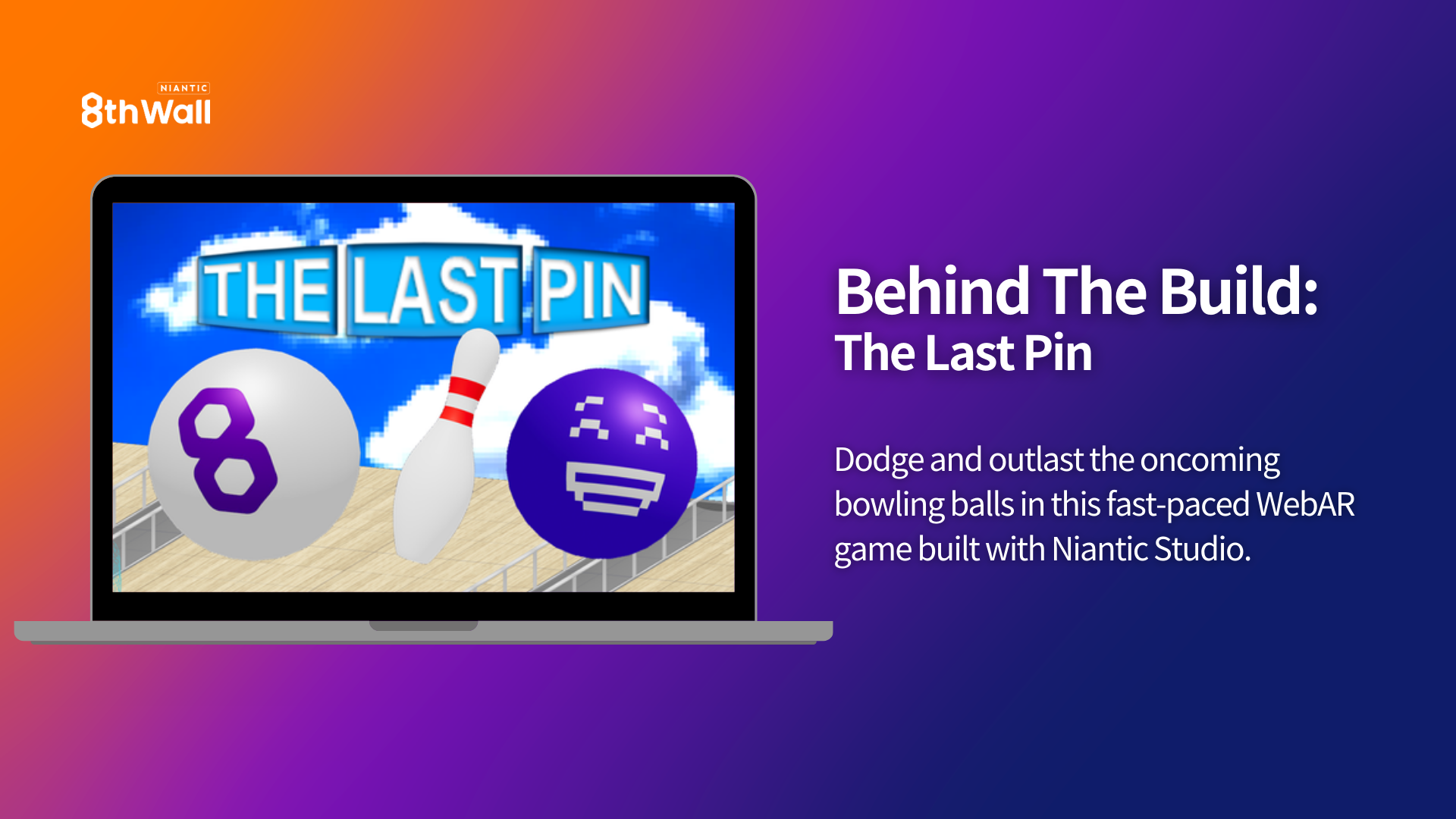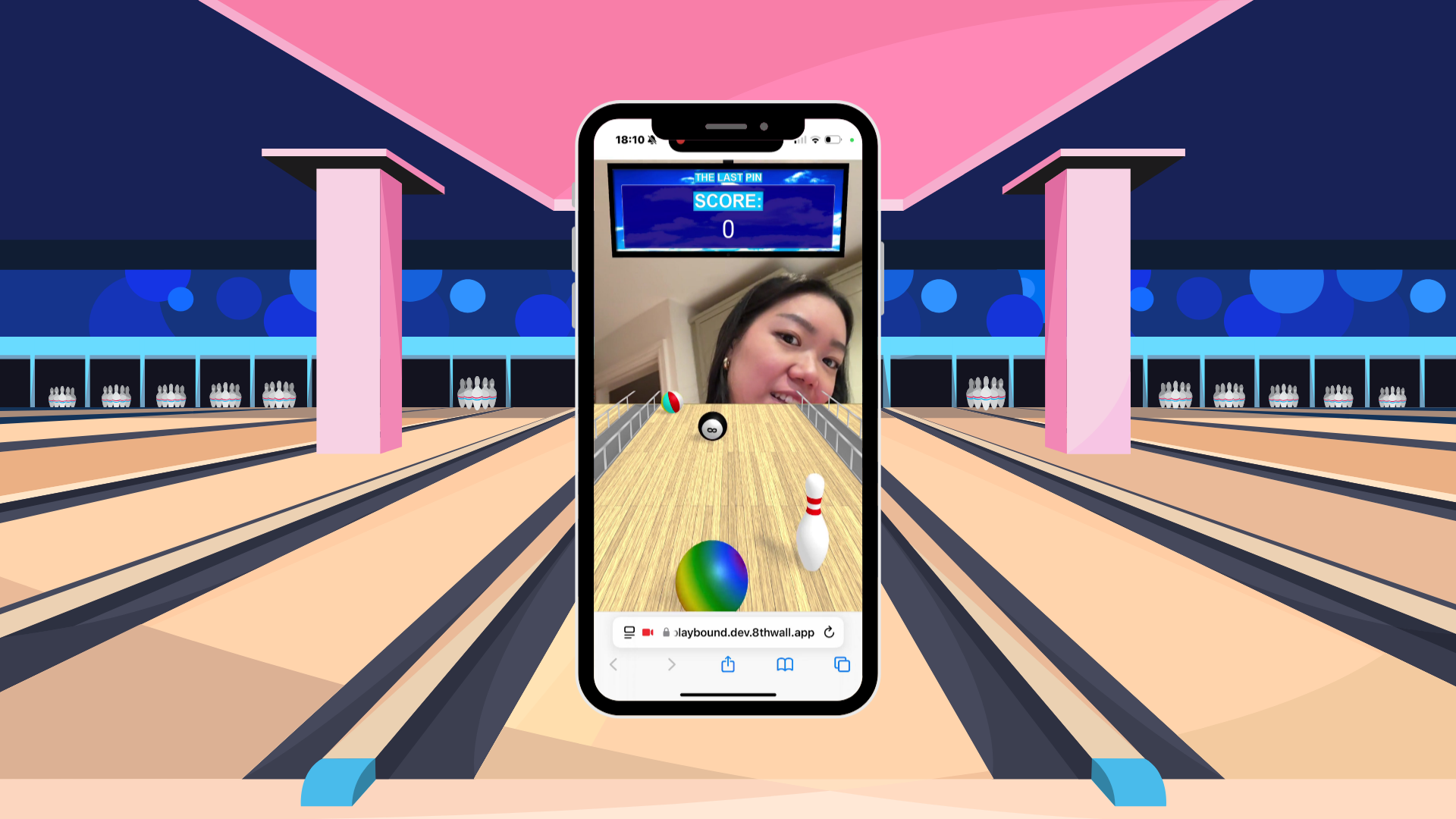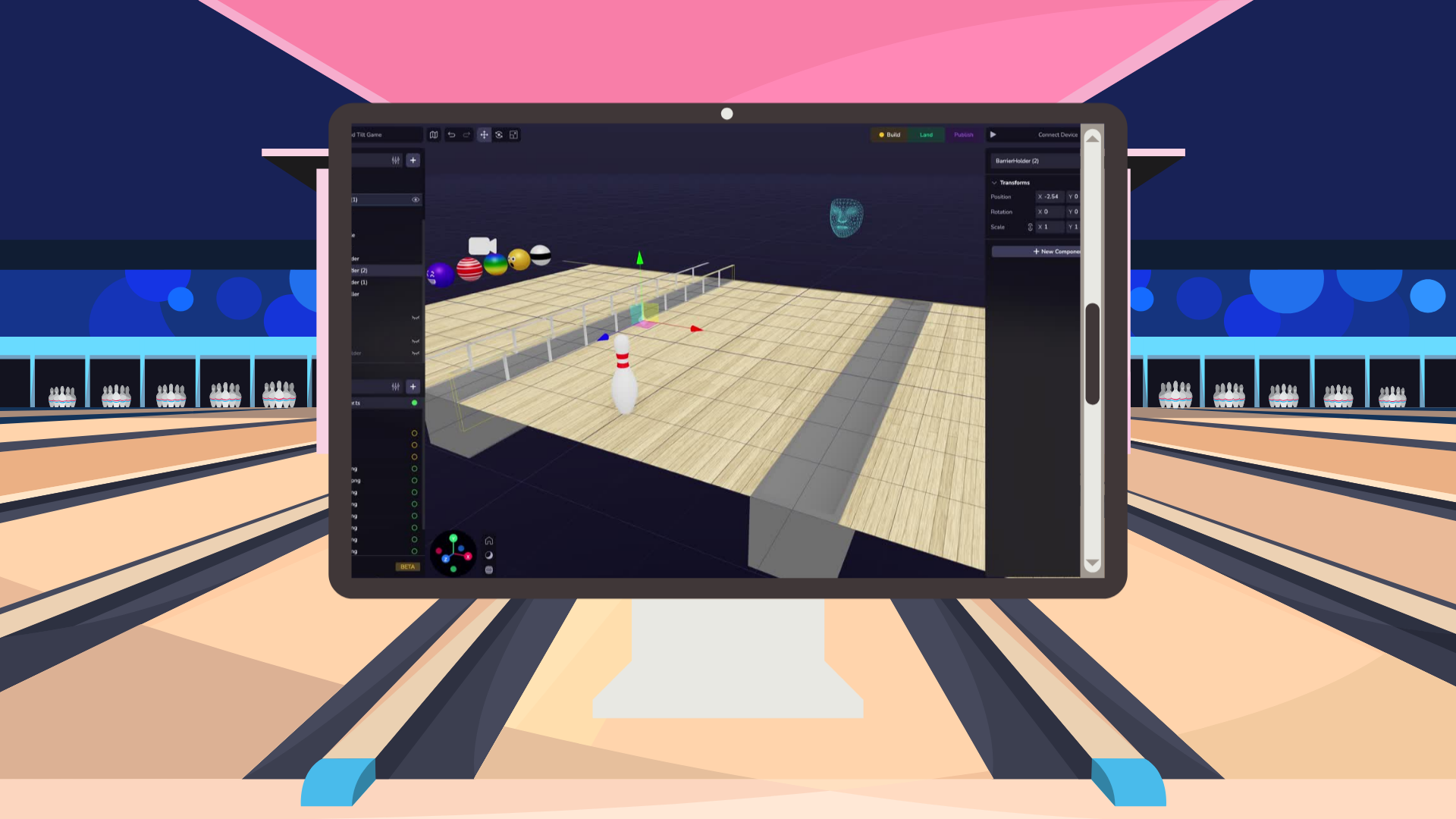8th Wall Blog
Behind the Build: Survive the strike in The Last Pin
Dodge and outlast the oncoming bowling balls in this fast-paced WebAR game built with Niantic Studio.

What happens when you become the last pin standing? The Last Pin, created by Sam Guilmard of Playbound Studio, is a WebAR game that challenges players to survive an onslaught of bowling balls using only head movements. By tilting left and right, players maneuver the lone pin to dodge incoming strikes. The longer they survive, the faster and more frequent the bowling balls become. This high-energy experience showcases how intuitive, physical input mechanics can be used to create engaging, browser-based gameplay.
We had the chance to chat with Sam about his creative process, the challenges he faced, and how Niantic Studio helped bring The Last Pin to life.

What inspired you to create Wall Bop?
I wanted to make a game that would closely resemble something you might find as a social media filter. It was important to me that the gameplay felt intuitive and easy to control so that the gameplay experience was fun and enjoyable. The actual inspiration for the game itself came after a really frustrating experience when I went bowling and kept only getting nine pins. It must have happened at least five times and resulted in my brother beating me, which of course is never fun.
How did Niantic Studio help bring your vision for this project to life? Were there specific tools or features that were essential?
The most essential feature that helped bring this game to life was the built-in animation system. It’s really easy to use and can be applied to multiple game components. For The Last Pin, I used animations to move the bowling balls instead of applying physics-based forces, which ensured a consistent performance across devices. This approach allowed me to incrementally increase the speed of the balls over time, making the game more challenging the longer a player survives.
The Niantic Studio visual editor was another major advantage. Having a 3D environment with real-time feedback made assembling the game incredibly easy. The Live Sync feature allowed me to immediately test changes and refine gameplay without long iteration cycles.
Finally, the physics colliders played a crucial role in collision detection. Without these, I would have needed complex calculations to detect when the pin was hit, which could have impacted performance. With Niantic Studio’s physics system, I was able to achieve smooth and efficient collision handling.
Were there any challenges along the way? How did you overcome them?
One challenge I faced was managing objects created at runtime. Assigning unique identifiers to dynamically spawned objects was tricky, making it difficult to modify them after creation. To solve this, I pre-placed all enemy objects in the scene and referenced them in the schema. This allowed me to manipulate them freely during gameplay.
Another challenge was communicating between scripts. Because my experience is fairly simple, I originally solved this by keeping everything within a single script. However, I later discovered that global event listeners are the best solution for this. Using global events, different scripts can communicate seamlessly, making it easier to structure and expand the project.
What were the main steps you took to make this project that would be helpful to share with other developers?
- Clone and study sample projects – I explored existing projects in Niantic Studio to understand its capabilities and how different mechanics were implemented.
- Experiment with small mechanics first – Before jumping into a full game, I created simple tests to get comfortable with features like tap detection, object collision, and physics.
- Use the documentation and forums – The tutorials and forum discussions were invaluable for troubleshooting and learning best practices.
- Iterate and test frequently – Niantic Studio’s simulator allowed me to tweak mechanics quickly and refine gameplay.
What advice would you give other developers interested in building 3D web, real-world games or AR experiences with Niantic Studio?
Just give it a go! Niantic Studio is an intuitive tool that makes AR game development accessible. If you’re new to the platform:
- Clone sample projects to see how they work
- Experiment with small mechanics before tackling a full game
- Leverage the 8th Wall forums and community for support
- Take advantage of the real-time Live Sync feature to speed up development
Where do you see the future of AR going, and how does Niantic Studio fit into that vision?
I see AR becoming a bigger part of advertising, gaming, and interactive storytelling. Brands and artists are already using AR to create immersive experiences that bridge the gap between digital and physical worlds. As AR hardware improves, I expect even more location-based and interactive experiences.
Niantic Studio is positioned perfectly for this future. It provides accessible tools for developers, allowing them to build AR experiences that run seamlessly across devices. By making WebAR development more approachable, it opens the door for more creators to bring innovative ideas to life.
Top features in The Last Pin

- Head-tilt controls – Players control the pin using natural head movements for an immersive, hands-free experience.
- Adaptive difficulty – Bowling balls speed up and spawn more frequently the longer you survive.
- Physics-based collision detection – Ensures precise hit detection between the pin and incoming bowling balls.
- Built-in animation system – Smooth, real-time ball movement without the need for physics-based forces.
- Randomized ball textures – 10 different designs keep each playthrough visually engaging.
Pro tips for aspiring developers
- Use animation over physics when possible – Animation systems ensure smooth and consistent motion across devices.
- Leverage global event listeners – They make it easy for different scripts to communicate and share data.
- Experiment with UI and 3D elements – Niantic Studio’s tools make it easy to integrate immersive interactions.
- Test and iterate often – Frequent playtesting helps refine mechanics and balance difficulty.
Ready to dodge and survive?
The Last Pin is a great example of how physical inputs and real-time animations can create an engaging and dynamic WebAR experience. If you want to learn more about Sam’s development process, check out his sample projects:
- Global Score Controller – Learn how to track and display in-game scores.
- The Last Pin - Sam has made the full game a cloneable sample project, check it out to understand how he brought the game to life.
Jump in, start building with Niantic Studio for free, and let The Last Pin inspire your next WebAR experience!
.png)